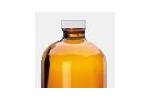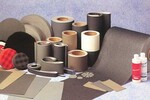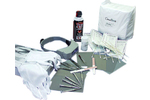- ▶
- Heaters/Source
- ▶
- Agilent Heaters and SensorsMass Spectrometry, Scientific Supplies & ManufacturingScientific Instrument Services 5973 Source Heater Tamper Resistant Allen Wrench 5973/5975 Quad Sensor 5985 Source Heater Assembly Agilent Interface Heater Assembly 5971 Interface Heater

- ▶
- MS Instrument Cleaning Supplies
- Lab/CleanMicro-Mesh® (Fine Cushioned Abrasive) Aluminum Oxide Cleaning Abrasive Fiberglass Cleaning Brushes Swabs and Applicators Nylon and Latex Gloves Cleaning Wipes SIS MS Source Cleaning Kits Dust-Off® Hurricane Canless Air System Wheaton Bottles Wheaton Vials Wheaton Closures Sterile Vials - Bottle, Stopper, and Cap - All Together Certified Sterile Kimble Chase Clear Serum Vials Soil Sampling Kits Crimpers and Decappers Temperature Measurement & Recording Devices Bullet Blender® Homogenizer The SW 110 Multi-Purpose Spot Welder New Era Syringe Pump Systems Ohaus MB Series Moisture Analyzers Celestron® Handheld Digital Microscope (HDM) Checkit® Pipette Accuracy Test Greenwood Lab Supplies Next Advance Lab Products Catalog Page G1

- ▶
- Micro-Mesh®Sheets Rolls Discs Pads Nail Files Tufbuf Micro-Gloss Tape Belts Sanding Swabs Polishing Tool Quick-Shine Buffers Kits - Plastic (power) Kits - Plastic (hand) Kits - Craftsman, Wood, Metal Kits - Automotive & Headlight Restoration Kits Kits - Aircraft Window Reference - Grit Size Reference - MSDS Sheets, Brochures, Instructions, Kits Print Catalog - Micro-Mesh Catalog Page A63 Catalog Page A64 Catalog Page A65 Catalog Page A66 Catalog Page G3 Catalog Page G4 Catalog Page G5 Catalog Page G6 Catalog Page G7 Catalog Page G8

- LiteratureApplication Notes Adsorbent Resins Guide Mass Spec Tips SDS Sheets FAQ MS Calibration Compound Spectra Manuals MS Links/Labs/ Organizations MS Online Tools Flyers on Products/Services Scientific Supplies Catalog About Us NextAdvance Bullet Blender® Homogenizer Protocols Micro-Mesh® Literature Instrumentation Literature Agilent GC/MS Literature SIS News / E-Mail Newsletter NIST MS Database - Update Notifications

- ▶
- Reference - MSDS Sheets, Brochures, Instructions, KitsMicro-Mesh Regular - Description of Micro-Mesh Regular Micro-Mesh MX - Description of Micro-Mesh MX for Metal Finishing Benefits of Micro-Mesh - What Makes Micro-Mesh So Special Ergonomic Benefits of Micro-Mesh - Human Factors, Engineering and Micro-Mesh TufBuf Polishing Pads - Polishing and Buffing Pads Guidelines for Acrylic Finishing Guideline for Making Belts with Micro-Mesh Micro-Gloss Instructions Metal Finishing with Micro-Mesh Random Orbital sanding with Micro-Mesh Solid Surface Finishing with Micro-Mesh Urethane Coating rectification Procedures Wood Finishing Procedures with Micro-Mesh Micro-Mesh Grit Size Conversion Chart Aquarium Restorer Kit Instructions Belt Finishing with Micro-Mesh Burn Kit Instructions Clear Seas Acrylic Kit Instructions Clear Seas Vinyl Kit Instructions Craft Kit Instructions Heavy Damage Removal Kit Instructions Light Damage Removal Kit Instructions KR-70 Acrylic Restoration Kit Instructions Maintenance Kit Instructions Micro-Mesh Anti-Static Cream Final Finish Micro-Finish Micro-Gloss Micro-Gloss # 5 TufBuf Polishing Pad

- ▶
- Ergonomic Benefits of Micro-Mesh - Human Factors, Engineering and Micro-Mesh (This Page)
HUMAN FACTORS ENGINEERING AND MICRO-MESH®
Ergonomic and environmental health factors are growing concerns in the work place. Common "off hand" finishing techniques require repetitive motions to achieve consistent and repeatable results. This usually includes picking up a part, rotating the part against a contact wheel with compound (or abrasive belts) as the finishing media, and returning the part to a holding spot.
These movements involve the use of hands, fingers, wrists, arms, and shoulders using constant pressure. Coupled with the repetitive skeletal/physiological/muscular movements, feedback from the contact of the part to the finishing wheel or belt is transmitted back to the operator. Bumps and shocks routed to the operator are further aggravated by part and wheel roughness. The above described conditions also are transmitted to the spine, hips, legs, ankles and feet if the operator is standing while doing the job.
Other factors in operator ergonomic stress are:
- Friction of the part against the wheel or drag.
- Pressure required to push the part against the wheel.
- The number of operations (steps) required to take a part from rough to finish.
Cushioned abrasives are ergonomically beneficial because they reduce the number of steps in the finishing process. The cushioning of MICRO-MESH helps reduce bumps and vibrations.
Another human factor concern in "off hand" finishing is the environment in which the operator works. "Off hand" finishers are exposed to grinding dust, sanding dust or buffing compounds. This exposure, along with the noise requires eye, ear and breathing protection relative to the amount of exposure. Other hazards are presented when finishing certain metals and plastics.
Another environmental concern not directly related to the operator is the clean-up of the finishing wastes from the finishing area. If this is done on a regular basis, storage and disposal of these wastes can be time consuming and expensive.
The concept of using a cushioned abrasive for "off hand" finishing is a step towards reducing the ergonomic and environmental concerns involved. Micro-Mesh is engineered to allow the abrasive grains to float on a thin resilient layer placed on the cloth backing. Unlike common coated abrasives the flexibility of the abrasive crystals which are not fixed in position, allows them to cut without fracturing. The cushioning allows the abrasive crystals to recede slightly. A relatively large crystal can be used to produce a fine scratch pattern with a rapid removal rate. This unique action often reduces the number of finishing steps by one or more. Simplifying a finishing process through step reduction will also help in the justification for robotic finishing.
The flexible cutting action of a cushioned abrasive with all abrasive crystals contacting the surface, is similar to planing as opposed to the gouging chisel like action of the individual crystals in common coated abrasives. Less material removal at each finishing step is needed to achieve the required level of smoothness. Less material removed and less crystal loss results in the environmentally desirable benefit of less material contact for the operator and less material to be disposed of. Reclaiming of abraded material may also be an option, since it is not contaminated with compounds.
Many fine finishing processes are "off hand" work started with a sanding belt and finished with one or more buffing operations. Buffing is less desirable than sanding from a human factors point of view.
Buffing compounds are often formulated with waxes, oil and solvents that pose certain exposure problems for the buffing operators. The cotton buffing wheel loses small fibers as it contacts the part. The fibers, the compound and swarf are all flung out into the immediate area. Ventilation protection for the operator, containment of the waste and waste disposal concerns are greatly increased when buffing is required in addition to sanding to achieve properly finished parts.
When Micro-Mesh belts are used, buffing can be reduced or totally eliminated. The cost benefit in waste disposal alone is significant.
Cushioned abrasives will reduce human factor concerns because:
1. they reduce process steps.
2. they can replace buffing operations.
3. they require less pressure (operator exertion) to achieve finer finishes.
Technical Bulletin #5 - 06/01/02


